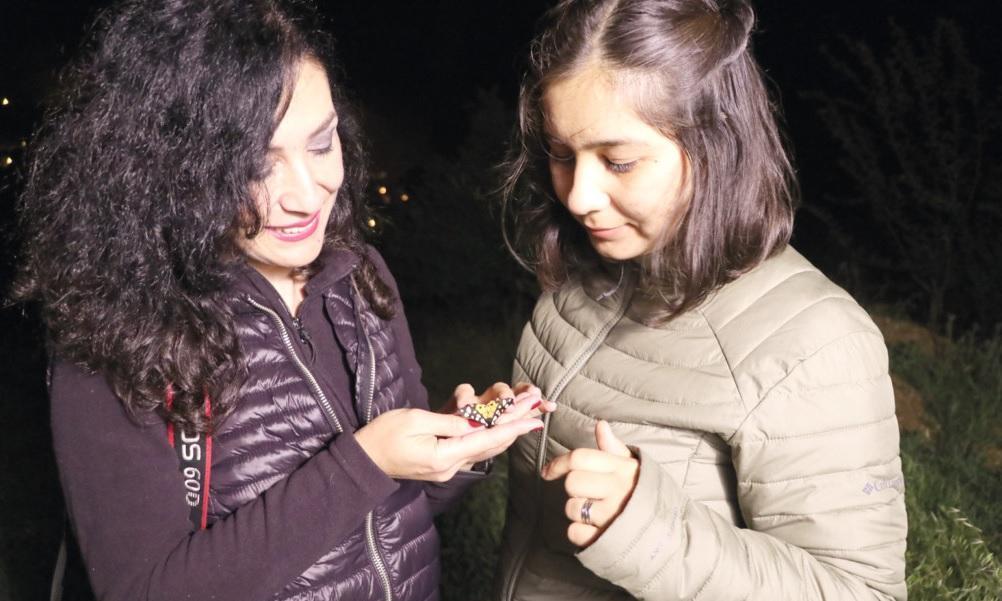
Academics Feza Can and Başak Ulaşlı from Hatay Mustafa Kemal University (MKU) Faculty of Agriculture, Department of Plant Protection are recording night butterflies on a special platform they set up at night in the Amanos Mountains in the southern province of Hatay.
The two female academics trace the night butterflies in Amanoslar, which offers a habitat for wildlife with its geographical structure and climate for a scientific study.
Can and Ulaşlı have begun to observe the night butterflies in the traps they prepare with curtains and light to attract the butterflies to the light when the weather gets dark.
During the study that lasts until the morning hours, the species that need to be identified are separated, taken into tubes and examined in a laboratory environment.
Sometimes with the help of security forces, academics trace butterflies in the darkness, recording the night butterflies of Hatay.

Speaking to the state-run Anadolu Agency, Can said she had carried out academic studies for more than 20 years to study the night butterfly species in Amanos. Stating that they have recorded hundreds of species of night butterflies so far, Can said that studies have been carried out to identify various living groups related to the fauna of the Amanos Mountains, which is an important habitat for living creatures due to its diverse ecosystems, but those studies on butterflies are limited to daytime species.
“We search for night butterflies. Amanos is very large, but we go step by step to examine certain groups. This year, we have chosen different subgroups, and we are trying to continue our studies on them at night. Our aim is to record night butterfly species by using different methods in different regions,” she said.
Stating that it is very difficult to study night butterflies as a woman, Can explained, “We set up camp and try to observe the butterflies coming at different time intervals until morning. For this purpose, we need to work in the darkness so that the light can attract the insects. For this reason, it is necessary to work in nature and in areas far from living places. Of course, this situation is a bit challenging for us in terms of security and conditions. First of all, we get permission from the security forces of the region, and then we set up our camp. It is not very easy, of course, sometimes we carry very large generators as light sources; it is a tiring process, but we do it fondly because there are many night butterflies hidden in the depths of nature.”
Ulaşlı said that she has been working on butterflies for about eight years. Stating that they continue their work without harming biodiversity, Ulaşlı said that after the land survey, the work continues in the laboratory environment.
Ulaşlı said watching butterflies in the mountains many be difficult as women, but they are proud.